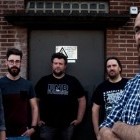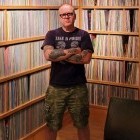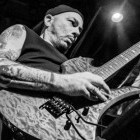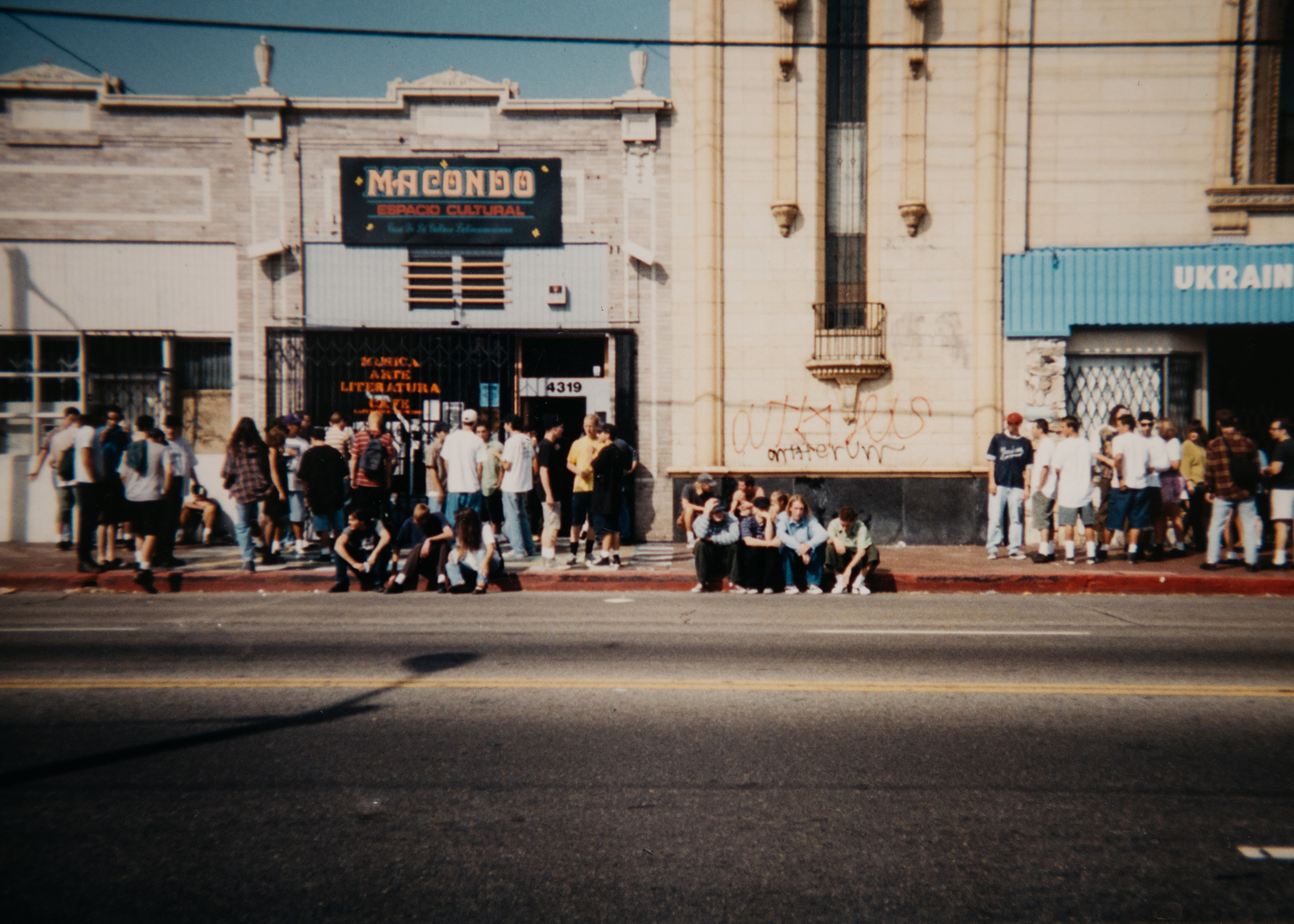
I've known Raymundo Reynoso for more than 3 decades. We ran in similar circles in the early '90s attending many of the same punk and hardcore shows in Los Angeles and the San Fernando Valley. My band, Strife, played the first-ever show at his family-owned DIY space / cultural center, Macondo Espacio Cultural.
Macondo was a vital cultural hub in the '90s hosting hundreds of shows from bands such as Jawbreaker, Samiam, Undertow, Unbroken, Downcast, Born Against, Bikini Kill, Spitboy, Avail, Farside, and more.
This Saturday, April 13th, Raymundo will be hosting a conversation about Macondo and it's contribution to the music landscape of Los Angeles as part of the group show, Music: 1950-2000 Artists, Records and the Industry, at the Diana Berger Art Gallery.
I chatted with Raymundo about the show, Macondo's legacy, and his family's dedication to DIY culture.
What was the inspiration behind Music: 1950-2000 Artists, Records and the Industry?
The unifying idea for this exhibition is to present a time capsule of music before social media and the ways music was heard, shared, explored, and experienced in the time range of 1950 to 2000.
By presenting physical media such as records, flyers, zines, and photographs, and focusing specifically on a diverse and underrepresented group of people involved in music in that time frame, the exhibition captures an inclusive, impactful, and influential period that still reverberates today.
Aside from some of the more well-known names like Ed Colver and Alice Bag, who are some of the other stand out contributors?
In my opinion, everyone involved in the show is a stand out contributor, starting with the entire team at Diana Berger Gallery (shout out Kirk, Mark, Sasha, Simoné, Bri, Jay!.) Along with Ed Colver and Alice Bag, Scott Council, Dr. Strange Records, Masaki Koike, Robert Landau, Claudia Linnear, Melanie Nilsen, Stoughton Printing Company, Dawn Wirth, Ewa Wojciak, and Macondo Espacio Cultural all get special focus in the exhibition.

Scott Council is presenting a film in the gallery called The Art of the Record that is mind blowing. Dr. Strange Records' section in the gallery will instantly transport you to one of the coolest record shops you’ve ever seen. If you’re into graphic design and printing, Masaki Koike and Stoughton Printing have some incredible work on display that shows the process of making unique records and packaging.
Claudia Lennear is an amazing vocalist who has performed and recorded with many greats such as Ike and Tina Turner, Joe Cocker, and Taj Mahal, to name a few, as well as inspiring songs by Mick Jagger and David Bowie. Ewa Wojciak presents a glimpse into how independent music publications were made prior to the internet with an awesome selection from the seminal No Mag. The whole exhibit really needs to be experienced in person.

The Macondo Espacio Cultural was very important to the punk and hardcore scene in the '90s. Can you tell us a little bit about Macondo and your contributions to the art show?
Macondo Espacio Cultural’s contribution to the exhibit includes an installation of rare photos of the three spaces Macondo was based out of through the years, culminating with arguably the most well known one on Melrose off of Vermont Ave, at least in terms of the hardcore/punk/emo/riot grrrl/indie scenes of the 90s.
READ MORE: Macondo: Remembering the ‘90s LA Hardcore Venue and Cultural Space
The seeds of Macondo originated from an indie music distro called PROCURE – Promociones Culturales Reencuentro – which my parents ran in the early 1980s out of my grandmother’s garage in Atwater Village in North East L.A. PROCURE was dedicated to disseminating independent, non-corporate, socially-conscious music from Latin America.
Founded in 1986 by Paula Ramirez and Raymundo Reynoso, Macondo Espacio Cultural was named after the magical town in Gabriel Garcia Marquez' One Hundred Years of Solitude. In 1987, its first iteration opened on Vermont Avenue and 7th Street in the heart of the Pico-Union neighborhood of Los Angeles.
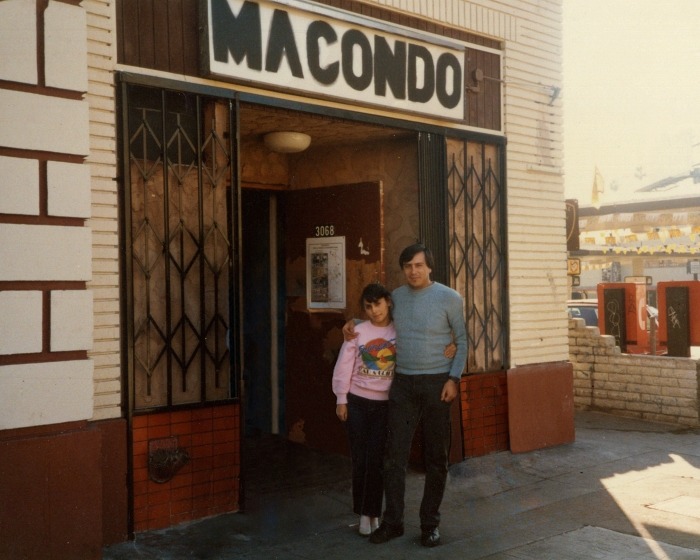
After an interim space at the First Unitarian Church on 8th and Vermont, Macondo moved to East Hollywood at the start of the '90s, around the corner from Los Angeles City College and next door to sometimes-punk venue the Ukrainian Cultural Center. It operated there until 1996, completing a decade of grassroots DIY community activism.
Centering on the arts of the Americas and the diverse underrepresented communities of Los Angeles, music always played an integral role in Macondo's programming. Performers from the Latin American New Song movement, straight edge hardcore bands from Southern California, groups preserving the indigenous folk music traditions of the continent, Rockeros En Español, and visiting emo and riot grrrl bands all shared a stage at Macondo. The space became an L.A. hub for music from around the world.

Macondo was always a non-profit, volunteer-run, community-based organization dedicated to providing a space for independent arts outside of the mainstream. The do-it-yourself ethos and independent spirit of hardcore closely paralleled the musical movements from Latin America that advocated for social change and inspired the formation of Macondo.
From 1992 through 1996, Macondo provided a crucial space for hardcore and all its tangents. In the spirit of community, the hardcore scene from that era enthusiastically embraced this vital space.

How did you decide what to include in the show and what are some of your favorite artifacts that you uncovered while putting this together?
Deciding what to include was a huge challenge. I had a core set of things I knew definitely needed to be included, but at a certain point, I decided to go with a more organic, spontaneous approach. You’ll see Oscar Chavez’ record with the song “Macondo" on it next to Rick Rodney of Strife wearing a Macondo shirt; Riot Grrrl Montebello’s early zines next to Born Against pamphlets; the Zapatistas next to Ebullition.
Overall, I wanted to represent the multitude of things that went on at Macondo. There are also photographs on display crowdsourced from the @macondohardcore Instagram page, which I was super conscious to try to get permission to include, but a couple might have slid in that I wasn’t able to credit. Sorry!
Some of my personal favorite items in the show include: Paula Ramirez’ (my mom) early hand-lettered flyers; a photo of my parents in front of the first Macondo; early mail order catalogs for my parents' music distro PROCURE; the first flyer I made for a show with Strife and Social Justice; a photo of Andrew from Strife on drums with Prohibition; Patchwork Fanzine #2; and a photo of Rob from Unbroken where you can see a bit of one of my earliest spray paint works in the background. In terms of music and the industry, I included Jimmy Eat World’s demo cassette that they sent to us looking to play a show at Macondo.
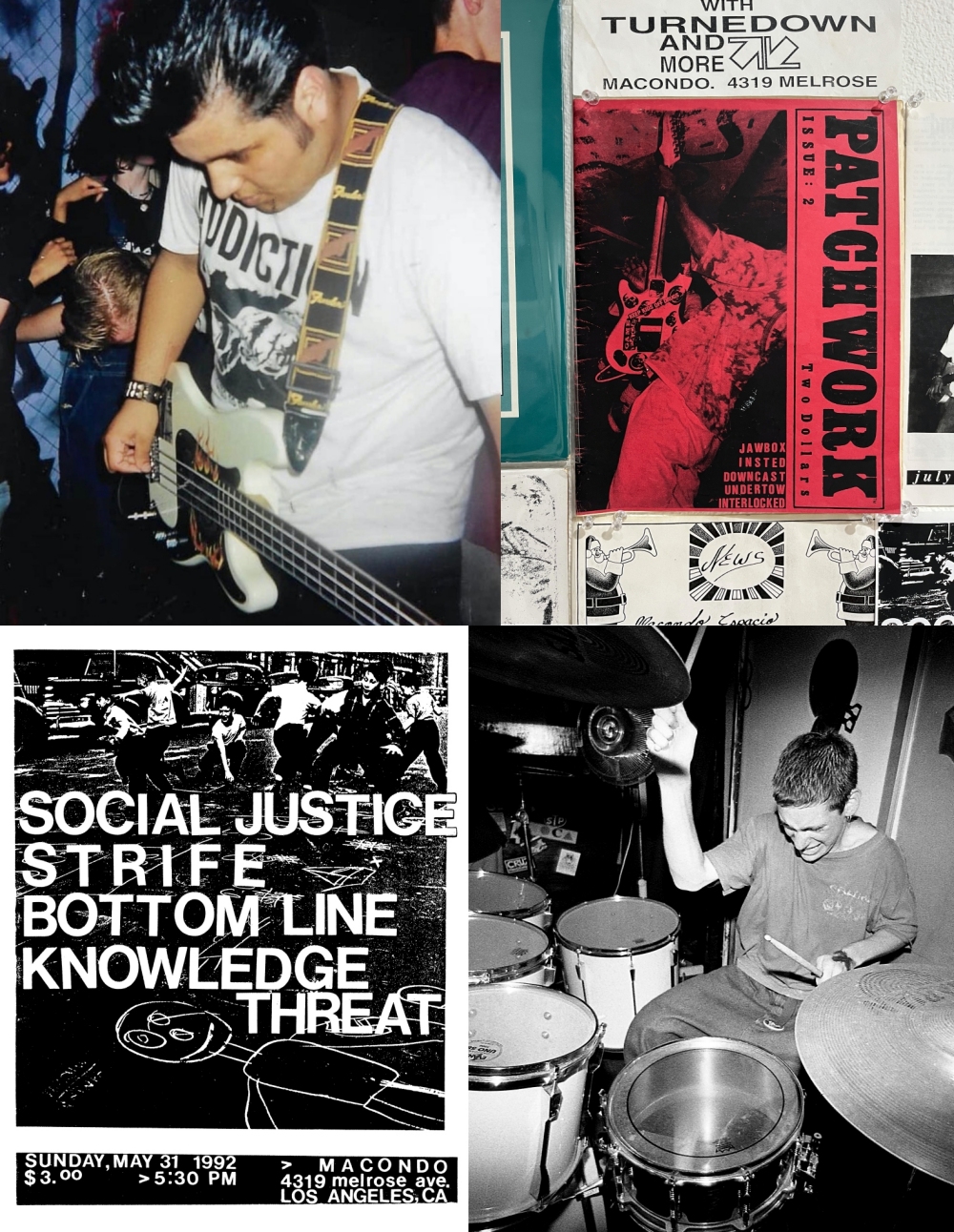
You had two art shows open the same week... Can you tell us a little bit about your solo show, Spooky Action at a Distance, at Luckman Gallery?
Spooky Action at a Distance is my first comprehensive solo exhibition in Los Angeles. It took place at The Luckman Gallery at Cal State L.A. I was able to present current mixed-media works, paintings I made during the pandemic, and a selection of older works based around zines I've done and the two books about my art that Zero Plus Publishing has put out.
I was also able to collaborate with my sister Julieta Reynoso on some sculptural installations and with a hero of mine, León Chávez Teixerio, on a video on view at the gallery. The impact and influence of being involved with Macondo and hardcore in general is a common thread throughout the exhibit. The theme of the show is the principle of entanglement and how our action and inaction can have effects on others and our world. The exhibit is also a metaphor on how interconnected we all are.
Preparing for two shows was definitely an undertaking. It’s probably common to hear now, but I had a lot of time during the pandemic to work on projects I had been wanting to carry out. One was the cataloguing and collecting of stuff related to Macondo, so fortunately, I was ready in a sense for the Music show when Macondo was invited to participate. Similarly, I had a solid body of work and a couple of new art projects happening when I was invited to show at the Luckman, so everything coalesced around the same time.

Tell us a little bit about the event on April 13 at the Diana Berger Gallery.
The talk on April 13th will be about the role Macondo played in the '80s and '90s independent music scene in Los Angeles. When discussing the talk with gallery director Kirk Pedersen, it became clear that a natural extension of the Diana Berger Gallery’s mission of building community was to invite the public to a conversation about a community space that had music as one of its core principles.
I’m hoping folks familiar with Macondo will come through and share some thoughts about the place, and I also hope people who have never heard of Macondo will be able to get a feel for what doing community work in the arts, and music in particular, was like in the 1980s and '90s.
On a practical level, we (Macondo) and the Diana Berger Gallery have been getting a lot of requests for the exhibit to be open on a weekend, so having the event on a Saturday will help make the whole exhibit more accessible. That weekend is also what I’m calling “RevFest3000" in my head with a bunch of legendary Revelation Records bands playing in the L.A. area. Rev bands were an important part of Macondo’s history, so hopefully the exhibition will get seen by people in town for those gigs.
Go!

***
Saturday April 13, 2024 | 1 PM
Macondo: El Breve Espacio
A conversation facilitated by Raymundo Tonatiuh Reynoso aka Ray Macondo about the space’s role in independent music in Los Angeles in the 1980s and 1990s.
Gallery hours: Noon to 4 PM
Diana Berger Gallery
Mt. San Antonio College
Building 1B/C – Room 10
1100 N. Grand Avenue
Walnut, CA 91789
@mtsac_dianabergergallery
@macondohardcore
@eyeone_sh
Music 1950-2000: Artists, Records, and the Industry runs through May 16, 2024. Check the website for regular gallery hours.










